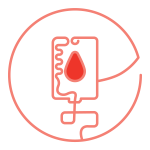

OUR STRATEGY
OUR STRATEGY


Strong relationships and ongoing engagement with all our key stakeholders are paramount to the ongoing sustainability of our operations and value creation. Stakeholder management has therefore been elevated to a group level to manage stakeholder relations and oversee this area more holistically, ensuring we meet expectations and strengthen the quality of our relationships. In particular, we have applied new energy behind the engagement with donor structures to ensure that they remain engaged after a difficult period dominated by lockdowns and remote working.
Stakeholder surveys are undertaken from time to time. Emphasis on these will increase going forward. The information that follows describes our frequency of engagement with our stakeholders, their needs, interests and expectations, risks and opportunities and how we respond to these.
We also provide our assessment of the current relationship against a desired relationship and give details of the status of current engagements with our various stakeholders. Stakeholder engagement is monitored by the Governance, Social and Ethics Committee.
We group our stakeholders as follows:





Strong relationships and ongoing engagement with all our key stakeholders are paramount to the ongoing sustainability of our operations and value creation. Stakeholder management has therefore been elevated to a group level to manage stakeholder relations and oversee this area more holistically, ensuring we meet expectations and strengthen the quality of our relationships. In particular, we have applied new energy behind the engagement with donor structures to ensure that they remain engaged after a difficult period dominated by lockdowns and remote working.
Stakeholder surveys are undertaken from time to time. Emphasis on these will increase going forward. The information that follows describes our frequency of engagement with our stakeholders, their needs, interests and expectations, risks and opportunities and how we respond to these.
We also provide our assessment of the current relationship against a desired relationship and give details of the status of current engagements with our various stakeholders. Stakeholder engagement is monitored by the Governance, Social and Ethics Committee.
We group our stakeholders as follows:






Metrics used to measure quality of relationships:

Metrics used to measure quality of relationships:

Metrics used to measure quality of relationships:
Board evaluations

Metrics used to measure quality of relationships:
Board evaluations

Metrics used to measure quality of relationships:

Metrics used to measure quality of relationships:

Metrics used to measure quality of relationships:
Donor feedback/surveys

Metrics used to measure quality of relationships:
Donor feedback/surveys

Metrics used to measure quality of relationships:

Metrics used to measure quality of relationships:

Metrics used to measure quality of relationships:

Metrics used to measure quality of relationships: